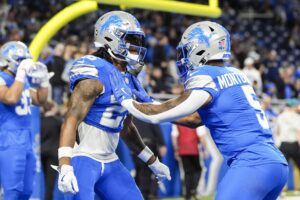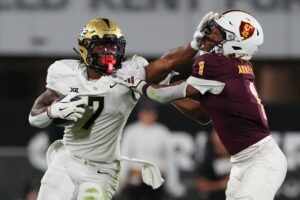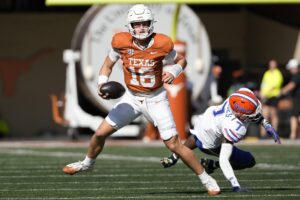With the 2017 NFL season in the books, the NFL has officially gone into off-season mode – a time where teams and players can experience lots of roster and salary changes. But as teams prepare for the upcoming draft and plan on negotiating contracts, it’s important for them to take a look at what changes the league plans on executing as well. After all, individual teams aren’t the only ones who have to make off-season adjustments. So as the 2018 NFL season approaches in the upcoming months, fans should expect to see the following rules implemented moving forward.
NFL Rule Changes: How the League Plans on Addressing and Revamping Its Policies
The Concussion Policy
This should come as no surprise. As long as you have athletes flying around the field at high speeds and crashing into each other, concussions will always be present in the sport of football. Fortunately, as technology continues to lead the healthcare revolution, according to George Washington University, diagnosing concussions has become a lot easier for medical professionals. That’s because physicians are now able to scan brain activities and use the information gathered to help them with their diagnosis. In fact, the technology has proven to be so effective in its findings that experts have noticed a rise in concussions – the highest report since 2012.
Most of the results occurred during training camp, and that’s why league officials will individually advise teams to develop ways to help lower the number of concussions sustained during practice. But this doesn’t guarantee that players will be 100 percent safe, mainly because concussions aren’t like headaches. They can’t be fixed by taking painkillers. In fact, doctors recommend staying away from painkillers since they interfere with the pain messages sent from the nerve to the brain, which can result in excessive bleeding. So what’s the best treatment? Rest. Because it allows the body to restore itself.
Even though the league has already addressed its game-day protocol in late December of last year, they still conducted well over 600 concussion tests during the preseason and regular season games. So as the league moves forward to minimize this problem, players and teams alike should expect to see league officials offer concussion protocol test before, during, and after games.
Instant Replay
A decade ago, a good week of football was determined by which teams won and which players excelled and carried their team to victory. Today, however, a good week of football simply comes down to the number of calls referees didn’t mess up. This is what made last season the NFL’s most inconsistent year when it came to replay reviews. Unfortunately, fans shouldn’t expect this policy to be revamped any time soon. That’s because it took longer than expected for Al Riveron (senior vice president of officiating) and Russell Yurk (replay vice president) to adapt to the NFL’s “clear and obvious” standards.
Luckily, not all hope is lost in the NFL’s replay policy. During Super Bowl LII, for example, both Riveron and Yurk made a fair call when they decided not to overturn Philadelphia Eagles running back Corey Clement’s touchdown late in the third quarter. To be fair, there also wasn’t enough evidence to overturn the touchdown, which made their judgment call honorable. Nevertheless, discrepancies that occurred earlier in the season must be ironed in order to make things better for everyone.
Targeting Rule
Although a lot of people enjoy watching football and label themselves as “football experts.” But many of them don’t know much about the college football targeting rule. According to Sports Illustrated, the rule specifically states that “no player shall target and make forcible contact to the head or neck area of a defenseless opponent.” Pretty simple, right? Not exactly. That’s because every targeting foul committed is different. For instance, if a player leads with the crown of their helmet toward a defenseless player, the result is a fine, disqualification, and game suspension. On the other hand, if a defensive player launches their body into an offensive player without leading with the crown of their helmet, which could result in different actions being taken. The chances of the player being disqualified are still high, but they may not get hit with a game suspension or unnecessary fines later on.
With all that in mind, the NFL’s executive vice president Troy Vincent has made it very clear that the league needs improvement when it comes to protecting players from helmet-to-helmet hits. As described above, the existing college rule calls for players who hit defenseless quarterbacks, receivers, and running backs – in the head or neck area – to be ejected following the foul. This rule, however, has had mixed success. This rule isn’t designed to make the sport soft. It’s designed to make players safe and avoid dangerous situations.
Moving forward, fans should expect to see the NFL make changes much throughout the year. Some changes will benefit the league, and some won’t. However, as the NFL scrambles to make the league a safer place for athletes, not every injury can be prevented.






